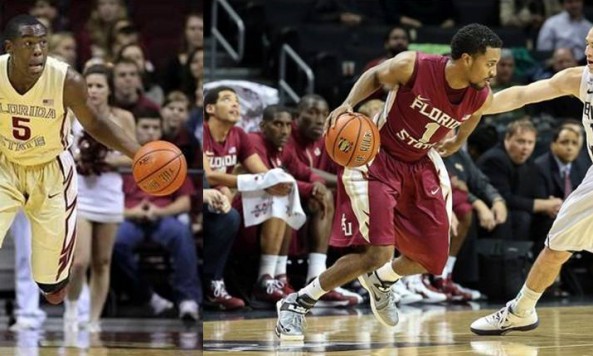Last year Leonard Hamilton had to make a tough decision. Late in December his team was playing defense at a remarkably high level. They'd already led the nation in defensive efficiency in two straight seasons, but last year's team was special. Not only were they on pace to lead the nation for a 3rd straight time, but they were on pace to be the best defense in all of college basketball in over a decade. But the same guys were struggling on offense. Coach Hamilton – known as a defense-first coach – evaluated his roster and decided that the offense just wasn't going to come around in time. So he scrapped the record setting defense and went to a 3-guard lineup for the rest of the season. The Seminoles fell to 15th nationally in defense, but along the way they won the ACC Title and advanced to their 4th consecutive NCAA tournament – both firsts for the program.
Once the season ended he began the final preparations for junior Ian Miller to take over at point guard. They'd been working on this for over two years. And then one game into the new season – a home loss to South Alabama – Coach Hamilton once again scrapped something he'd worked hard to build. The Miller-to-point experiment was over. Last year he scrapped the lineup in favor of three guards. This year he slid Miller off the ball, and inserted a 6-7 true freshman at point. This despite the fact that his defense was already struggling, and putting in a true freshman would only make it worse.
Three games later they're 3-1, they're the champions of the Coaches vs Cancer Classic, and they have two resume-quality wins.
It appears – once again – that the hard choice was the right choice.
This isn't a knock on Ian Miller. Sliding him off the ball allows him to do what he does best – break down defenses. Playing point guard he simply thought too much. He didn't react. Off the ball he reacts. He's the most natural scorer FSU has, and he has excellent vision. Essentially, he's a second point guard on the floor, only he's not running things. In the championship game of the Coaches vs Cancer he led the team with 6 assists, despite playing off the ball.
His replacement – at least in the starting lineup – is 6-7 Montay Brandon. The consensus 4* recruit became a starter in his 2nd career game. He's the classic Leonard Hamilton recruit, as the word which best describes him is 'versatility.' Ham likes to be able to move guys around. Brandon – for example – was covering 6-9 uber-athletic C.J. Aiken for much of the CvC final. How many times will St. Joe's face an opponent who has their point match up with Aiken? (I'll give you a hint – it's one).
But Brandon becoming the starter wasn't the only change. In the season opener freshman point guard Devon Bookert played just one possession. He was recovering from a knee injury. But in the second game – with Brandon at the point – Bookert played 18 minutes off the bench. In the CvC final vs St. Joe's he played 17. He's still not in game shape, but he's getting there.
Adding these two to the lineup completely changed the offense.
It changed so much that I went to the data to see just how much.
I looked at every possession FSU played for the first four games, and kept track of how the team did with each rotation. I removed garbage time (as defined by Pomeroy) and also filtered out free throws from flagrant fouls and intentional fouls (things which have nothing to do with the efficiency of the players on the court).
The results even exceeded the eye test.
When Montay Brandon is on the court FSU scores 1.24 points per possession. When he's not, they score 1.13 – a 9% decrease.
When Devon Bookert is on the court FSU scores 1.23 points per possession. When he's not, they score 1.15 – a 7% decrease.
You'd think this might be overly weighted by the first game in which Bookert mostly sat out. But Brandon played a bunch of minutes in that game. And since then they've both been near the top of single game efficiencies.
Still, the sample size is small, so I'll have to continue to monitor this.
In the meantime – some eye test.
First up is Montay Brandon. He's not the distributor like Bookert is, but his versatility seems to make the offense hum. He can pass. He can drive. He can score. And he's really, really big for a point guard.
For Bookert, I divided the skills up a bit. First is his ability to break down defenses and distribute. That can be via the dribble or pass. The important part is that he delivers the pass accurately. There are plenty of people who can see the same passes as good point guards see. But good point guards consistently lay the ball into 'the slot' – or the place where the scorer needs it to be delivered in order to be the most effective.
Second are his lobs. Playing point on a team with extreme athleticism, you always have to have your head up for potential lobs.
Lastly, he can score. All modern point guards can.
Props to Coach Hamilton for having the confidence to so quickly end a long-term experiment. Now let's see where that decision leads.























